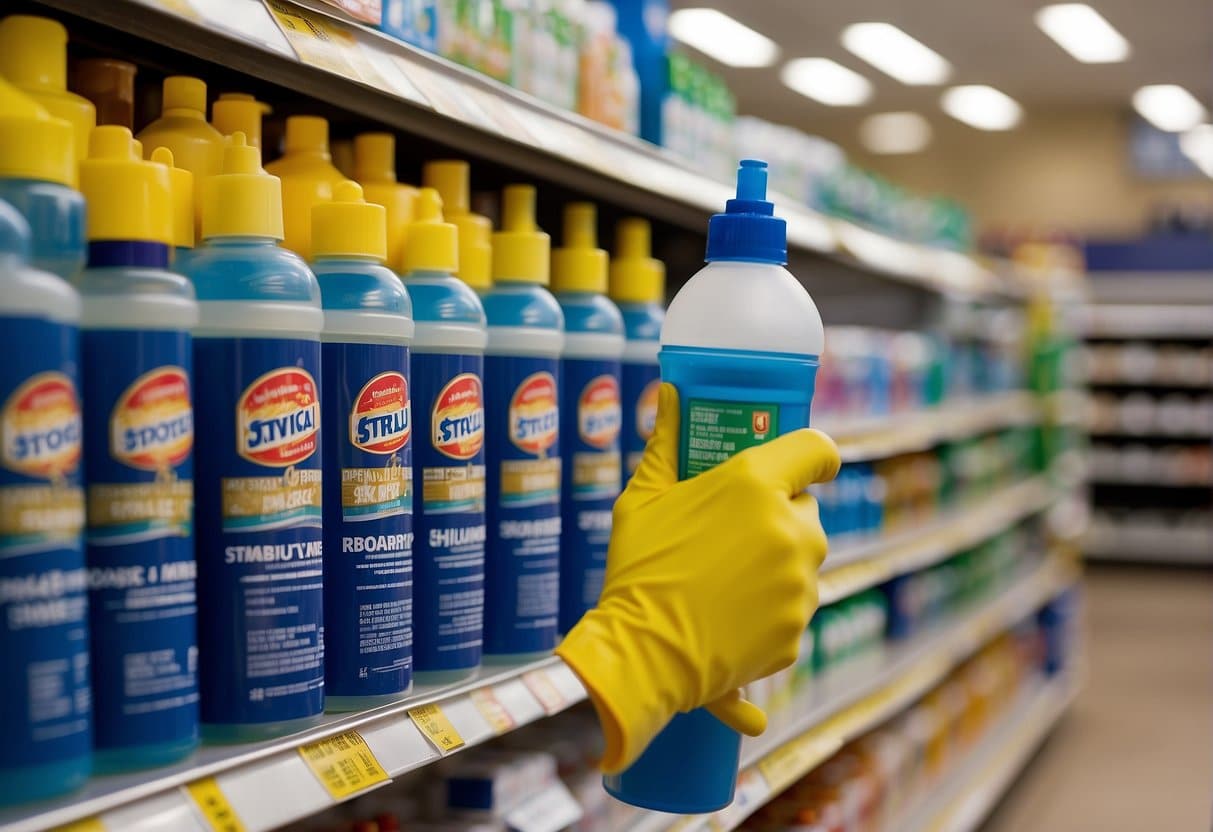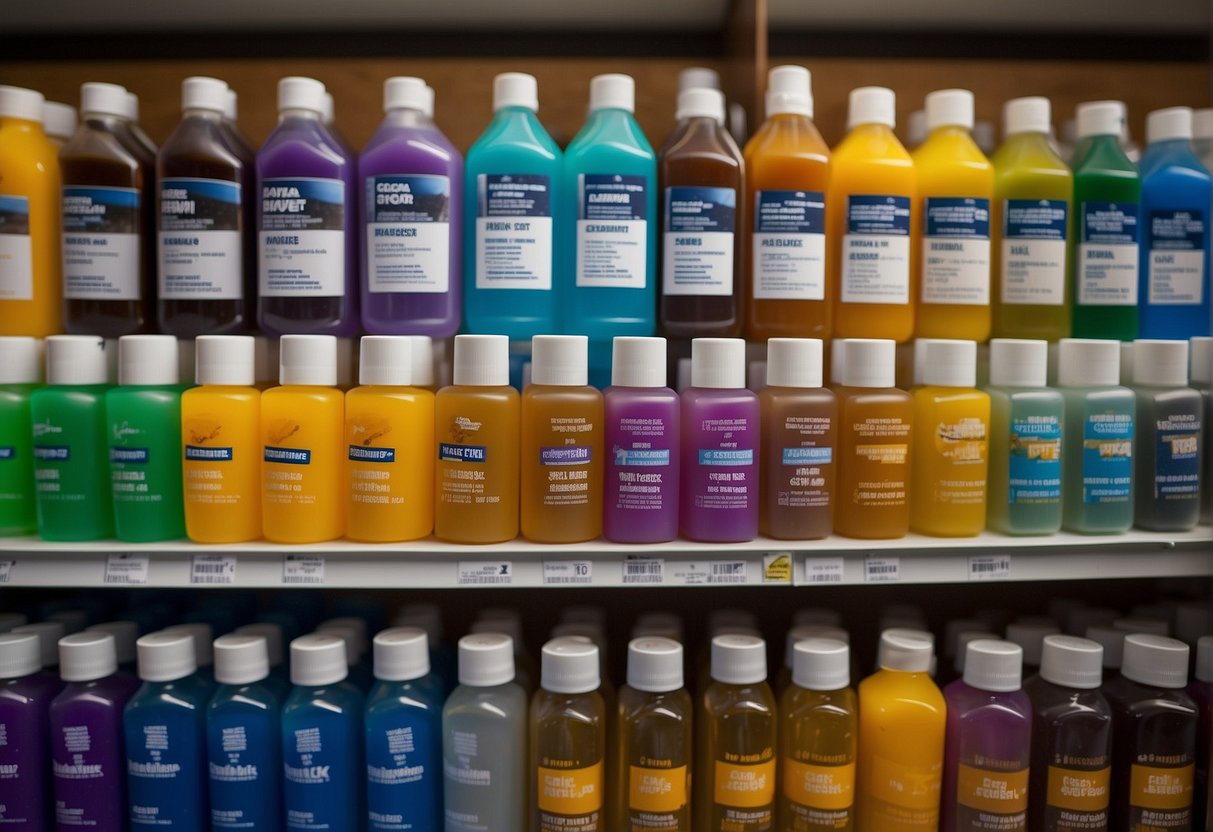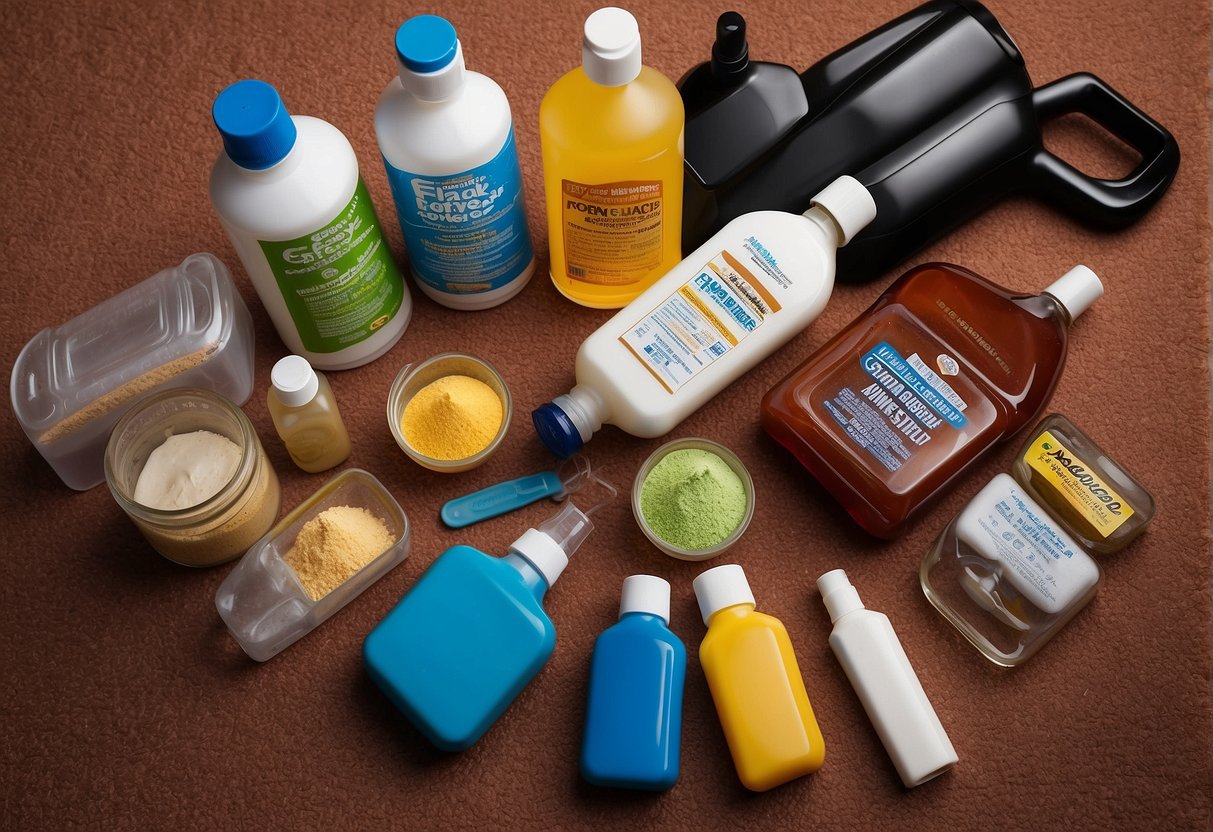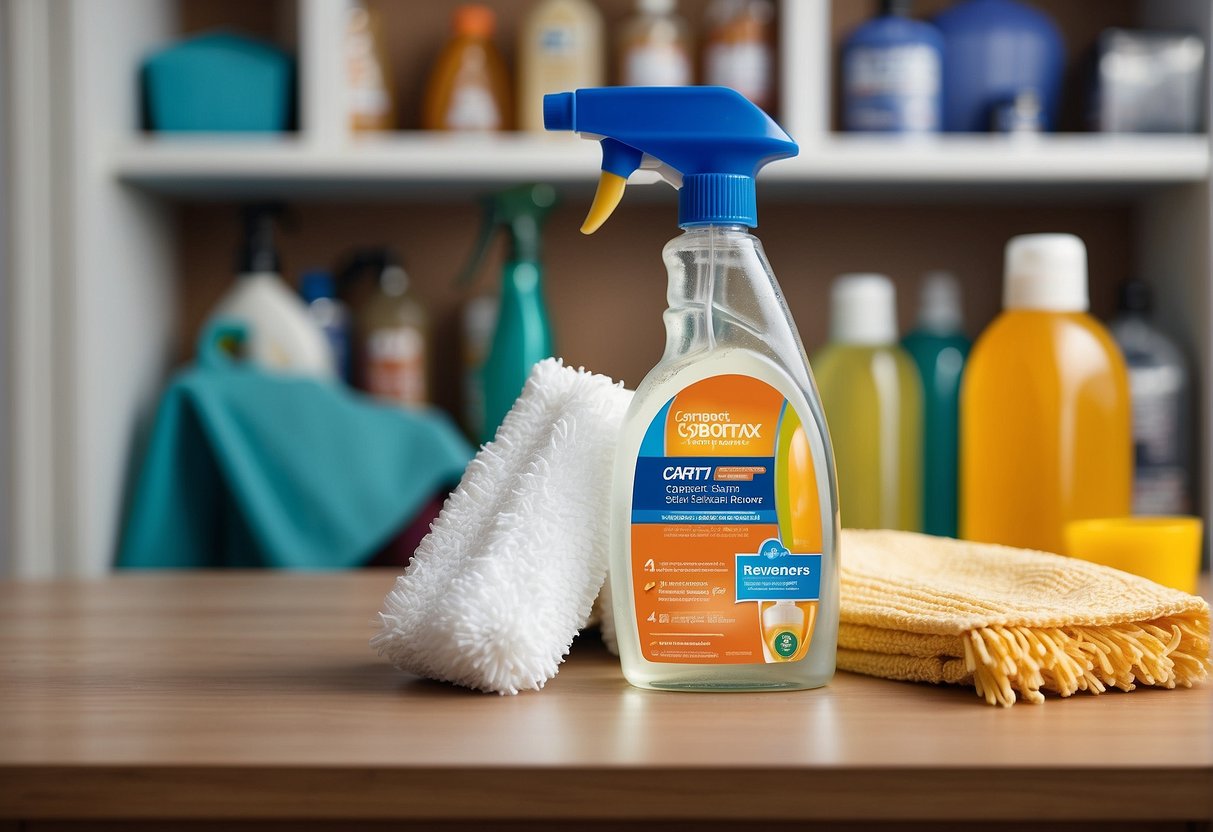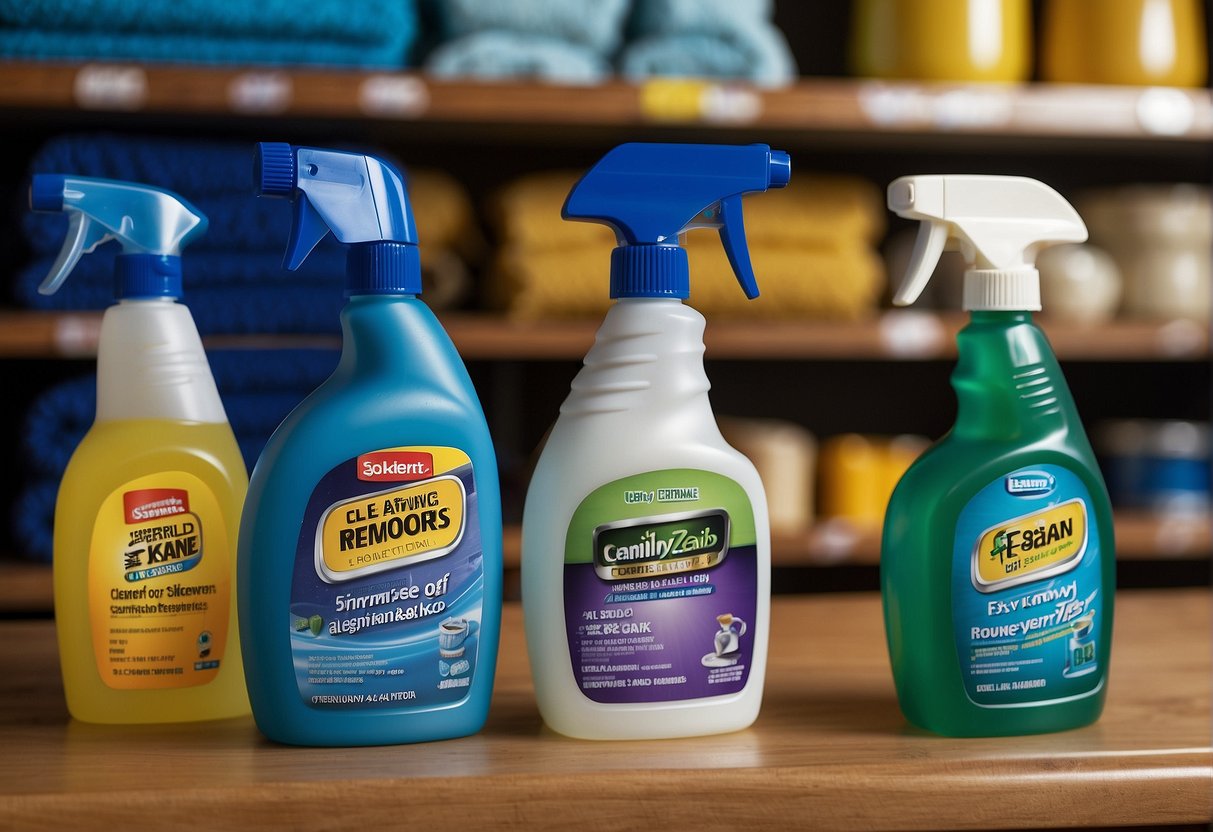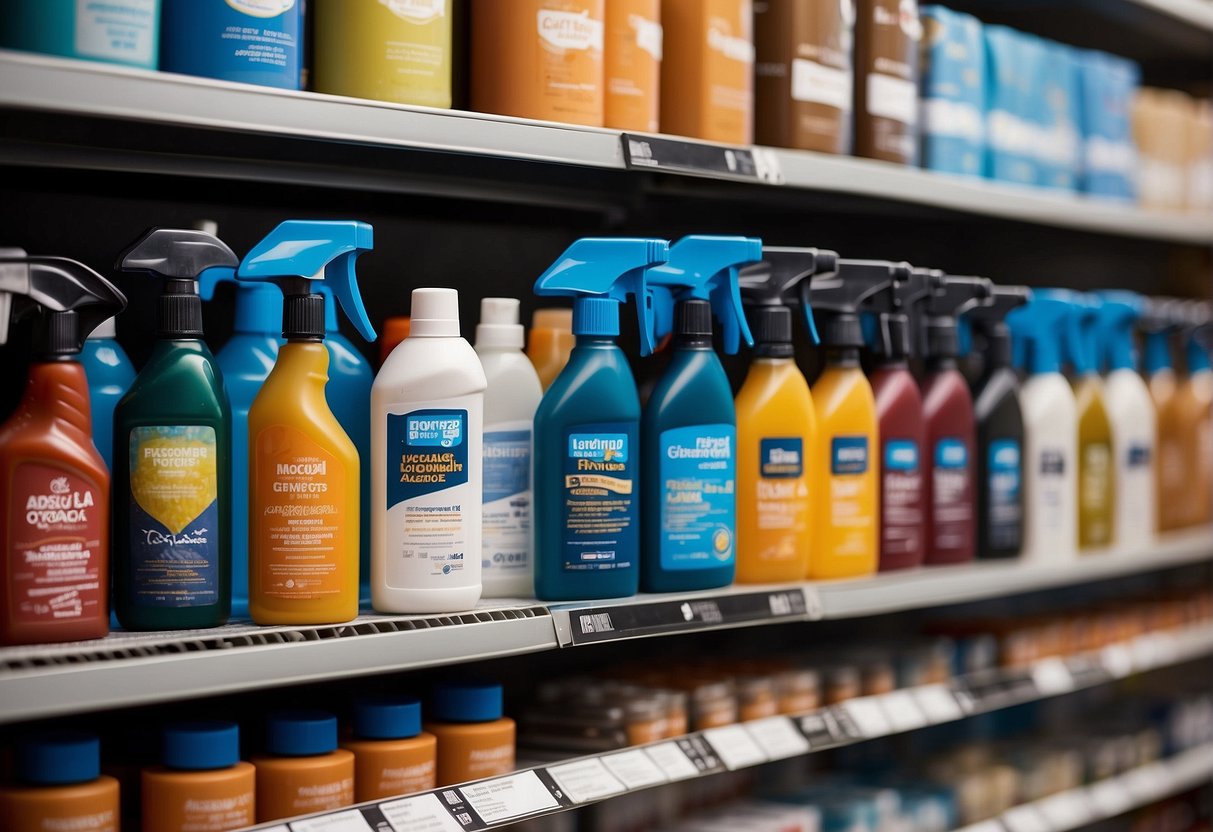Selecting the best carpet stain remover is essential for maintaining the appearance and longevity of your carpets. Carpets are susceptible to a variety of stains, from those made by spilled drinks and food to mud and pet accidents. The right stain remover not only lifts away the stain but also preserves the fabric’s integrity. When choosing a carpet stain remover, understanding the nature of the stain and the type of carpet you have is crucial for effective cleaning without causing damage.
There exists an array of carpet stain removers on the market, each designed to tackle specific types of stains. From powders and sprays to foams and shampoos, the options are vast. Factors such as the remover’s formulation, active ingredients, and safety for pets and children play a significant role in the selection process. Additionally, the tools and accessories used in the application can enhance the stain removal process. By considering these elements, consumers can ensure they choose a product that is effective and safe for their home and carpet type.
Key Takeaways
- Effective stain removal depends on appropriate product selection for different types of stains and carpet materials.
- Product formulation and ingredient safety are pivotal considerations for ensuring a healthy environment.
- Utilizing suitable tools and methods can significantly improve stain removal outcomes.
Understanding Carpet Stains
When it comes to maintaining carpets, understanding the different types of stains and the principles of stain removal is essential.
Types of Carpet Stains
Carpet stains come from various sources and can adhere to carpet fibers in different ways. Organic stains such as wine, coffee, blood, chocolate, and pet stains like urine, often contain tannins or proteins that bind to the carpet and may cause discoloration. Inorganic stains might include mud or grease, which leave behind particles or residues that are not always soluble in water.
- Protein-based stains: blood, urine
- Tannin-based stains: red wine, coffee
- Oil-based stains: grease, chocolate
- Dirt-based stains: mud
The Science Behind Stain Removal
Stain removal is a chemical process that varies depending on the stain’s composition. It involves either dissolving the stain or altering its chemical structure to make it less visible and easier to lift from the carpet fibers. For example:
- Wine and Coffee: Tannin-based stains often require acidic cleaners to break down the compounds.
- Grease: Solvents are used to dissolve and remove oil-based stains.
- Blood and Urine: Enzymatic cleaners target protein-based stains, breaking them down into simpler substances.
- Mud: Particulate stains like mud need to be dried, vacuumed, and then treated with a detergent.
Each stain type may require a specific approach, considering the carpet’s material and the stain’s age.
Types of Carpet Stain Removers
When selecting a carpet stain remover, consumers should consider the composition and intended use of the product. The type of stain, carpet material, and environmental impact are fundamental considerations.
Chemical-Based Stain Removers
Chemical-based stain removers frequently contain powerful ingredients like hydrogen peroxide, ammonia, or chlorine. These compounds are effective at breaking down a wide range of stains through oxidation or other chemical reactions. Products may vary in their concentration of active ingredients, so it’s important to check the label for appropriate usage to prevent carpet damage.
- Peroxide-based cleaners, which often include hydrogen peroxide, excel at treating organic stains by lifting them from the carpet fibers.
- Enzymes are sometimes integrated into chemical stain removers to specifically target protein-based stains such as blood or food.
Highly effective on tough stains, chemical removers must be used with care to avoid discoloration or damage to carpet fibers. Users should ensure proper ventilation when applying these products to reduce the risk of inhaling fumes, particularly when using removers with ammonia or chlorine.
Natural and Eco-Friendly Solutions
Natural and eco-friendly stain removers are designed for consumers looking for non-toxic and biodegradable options. These solutions often employ natural substances like vinegar or citrus extracts to treat stains, and are typically free from phosphates, chlorine, and synthetic fragrances.
They are gentler on carpets and safer for households with children and pets. While they may require more time to work compared to chemical removers, they offer a sustainable choice without sacrificing effectiveness. Consumers should still test these products on an inconspicuous area before widespread application.
Specialized Stain Removers
There are products specifically formulated to tackle particular types of stains or for use with certain carpet fibers.
- Enzymatic cleaners are a prime example and rely on natural enzymes to break down stains such as pet urine, feces, or vomit. They are highly specific and work by breaking down the structure of the stain, providing a thorough clean without the use of harsh chemicals.
Each kind of specialized stain remover is tailored for a unique cleaning scenario. For instance, a cleaner designed for synthetic carpets may not be suitable for natural fibers like wool. It’s imperative to match the stain remover with both the type of stain and the carpet material.
Selecting the Right Formulation
When choosing a carpet stain remover, the formulation is a critical factor that will determine its effectiveness on various types of stains. Whether one opts for a liquid, powder, spray, foam, or aerosol, the choice should align with the specific cleaning needs and type of carpet.
Liquid Versus Powder
Liquid cleaners are versatile and can be directly applied to a stain, offering immediate interaction with the soiling. They are particularly effective for recent spills. Notable liquid options include the likes of Folex Carpet Spot Remover which is known for its effective, non-toxic formula. Conversely, powder cleaners like oxy stain removers often require time to absorb moisture and therefore are better suited for less urgent, deep cleaning tasks. They might also be a better fit for high-traffic areas where a longer setting time is feasible.
- Liquid Cleaners:
- Immediate application
- Ideal for fresh stains
- Powder Cleaners:
- Require setting time
- Suited for deep, less urgent cleans
Spray Formulas
Spray formulas offer convenience and precision in application. They typically come in a liquid form that’s dispensed in a fine mist, which allows for targeted treatment, even distribution, and minimal waste. Users should inspect the label for spray formulas that leverage enzymatic formulas, as these are particularly adept at breaking down organic stains such as pet accidents or food spills.
- Advantages of Spray Formulas:
- Convenient application
- Precise targeting of stains
- Efficient in product use
Foams and Aerosols
Foams and aerosols provide a thicker formulation that clings to fibers for prolonged engagement with stains. This form is especially advantageous for stubborn or set-in spots. They often have a lifting effect that can help with the removal of dirt and stains from the carpet fibers. It’s beneficial to consider products like those with enzymatic formulas within this category for their ability to breakdown tough, organic stains.
- Benefits of Foams/Aerosols:
- Cling to fibers for better stain interaction
- Useful for stubborn or set-in stains
- May offer a lifting effect to pull stains out
Factors Affecting Stain Remover Efficiency
Choosing the best carpet stain remover requires understanding how different variables impact its effectiveness. Two critical factors to consider are the carpet fibers and the nature of the stain itself, such as its age and type.
The Role of Carpet Fibers
The construction and material of a carpet’s fibers greatly influence the selection of an appropriate stain remover. Carpets can be made from a variety of materials, each with different absorption and stain resistance levels. Here’s how common fibers react to stains:
- Nylon: Highly resilient and typically easier to clean.
- Polyester: Resistant to water-soluble stains but may struggle with oil-based spills.
- Wool: Absorbs stains quickly, requiring fast action; may be damaged by harsh chemicals.
- Olefin: Resists moisture and staining but can be easily damaged by certain chemicals.
When addressing stains on these fibers, one should consider the cleaner’s formulation relative to the fiber’s characteristics to avoid damaging the carpet or leaving residues that could attract more dirt.
Stain Age and Type
Stains vary by age and substance, impacting a stain remover’s efficiency:
- Fresh Stains: Typically easier to remove, requiring prompt action for best results.
- Set-in Stains: The longer a stain remains, the more difficult it is to remove. Specific treatments might be needed for these types of stains.
- Dried Stains: Once a stain has dried, it often requires a multiple-step approach, including rehydrating to loosen it.
- Tough Stains: Certain stains, like from chocolate, makeup, or mud, may need specialized removers designed for that particular substance.
Here is a quick reference on treating various stains:
| Stain Type | Removal Tip |
|---|---|
| Makeup | Gentle, targeted cleaners to prevent spreading. |
| Mud Stain | Let dry, vacuum, then use a mild detergent solution. |
| Chocolate Stain | Scrape off excess, apply a specific stain remover gently. |
Understanding the specifics of the stain type and age will help in the selection of the most effective stain remover, leading to better outcomes.
Best Practices for Stain Removal
Choosing the right carpet stain remover is crucial, but so is knowing how to use it effectively. The reader will learn about specific steps and techniques to maximize the effectiveness of their carpet spot remover through pre-treatment, application methods, and after-treatment care.
Pre-Treatment Techniques
- Immediate action: It is essential to act quickly once a stain occurs. They should blot up as much of the spill as possible with a clean, absorbent cloth or paper towel, working from the outside of the stain inward to prevent spreading.
- Test for colorfastness: Before applying any carpet spot remover, they should test it on an inconspicuous area of the carpet to ensure it doesn’t cause discoloration.
Application Methods
- Read the instructions: Each product has its own set of guidelines for use. They should thoroughly read and follow the manufacturer’s instructions for the best results.
- Use the right amount: A common mistake is using too much cleaner, which can leave residues behind. They should apply the carpet spot remover sparingly and according to directions.
- Waiting period: Many carpet stain removers require a waiting period to effectively break down stains. They should allow the product to sit for the time specified by the manufacturer before proceeding.
After-Treatment Care
- Rinsing: After the waiting period, they should use clean water and a clean cloth to blot the area and remove any remaining carpet stain remover from the fibers.
- Drying: The treated area must be thoroughly dried to prevent mold or mildew growth. They can use a dry towel to blot the moisture and then allow it to air dry completely.
- Vacuuming: Once the carpet is dry, they should vacuum the area to restore the pile and remove any residual cleaning particles.
Reviews of Top Carpet Stain Removers
When choosing the best carpet stain remover, a careful analysis of performance reviews and stain specificity will guide consumers to the right product.
Best Overall Choices
Folex Instant Carpet Spot Remover ranks high among carpet stain removers for its versatility and effectiveness on a wide range of stains. Users often praise its ability to tackle tough spots without the need for rinsing or vacuuming, which makes it a go-to solution for quick cleanups.
| Product | Type | Pros | Cons |
|---|---|---|---|
| Folex | Instant Spray | Non-toxic, no rinsing required, safe on colorfast carpets | May not work on every type of stain |
| Resolve | Foam Spray | Effective on a variety of stains, easy to use | Not specifically pet-focused |
| Best Enzyme Cleaner | Enzymatic | Targets organic stains and odors, safe for pets and children | Slower action; requires time to work |
Best for Specific Stains
For wine stains, Wine Away Red Wine Stain Remover is frequently recommended. It is specifically formulated to tackle red pigments, making it highly effective for those particular spills.
Best Enzyme Cleaners are advisable when dealing with organic and biological stains, such as those from pets. These cleaners work biologically to break down stains and odors at the molecular level, providing a thorough clean. One should ensure he chooses an enzyme cleaner that is safe for the type of carpet and the inhabitants of the home.
Understanding Ingredients and Safety
When selecting a carpet stain remover, it’s crucial to consider the ingredients and their safety implications. Certain chemicals can be harmful to both humans and pets, while others might be environmentally friendly but less effective.
Harmful Chemicals to Avoid
- Bleach: It can discolor carpets and is hazardous if inhaled or comes into contact with skin.
- Formaldehyde: This preservative can cause respiratory problems and skin irritation.
| Chemical | Risks | Commonly Found In |
|---|---|---|
| Sulfates | Can irritate the skin and eyes. | Detergents, cleaners |
| Peroxide | May bleach color from carpets. | Whitening agents |
| Phthalates | Linked to hormonal disruptions. | Fragranced cleaners |
Avoiding these harmful chemicals is crucial for the safety of all household members.
Natural Ingredients and Their Effects
- Enzymes: Naturally break down stains without the use of harsh chemicals.
- Essential Oils: Provide fragrance and have antibacterial properties, but can be potent allergens for some.
| Ingredient | Effects | Considerations |
|---|---|---|
| Bicarbonate Soda | Lifts stains with mild abrasion. | Non-toxic, safe for use around pets. |
| Vinegar | Cuts through grease and deodorizes. | May have a strong odor. |
Natural ingredients like surfactants from plants can effectively clean without the side effects associated with synthetic alternatives.
Keep in mind that optical brighteners may make carpets seem cleaner by reflecting more light but do not contribute to actual stain removal. The goal is to understand each ingredient’s role and safety to make an informed decision.
Tools and Accessories for Enhanced Cleaning
Selecting the right tools and accessories is crucial for effective carpet cleaning. These aids not only streamline the stain removal process but also enhance the efficacy of cleaning products.
Carpet-Cleaning Machines
Carpet-cleaning machines offer a powerful solution for removing stains and maintaining the overall cleanliness of carpets. They typically employ a combination of:
- Cleaning Solutions: These are specially formulated for use in machines to break down stains.
- Hot Water: Enhances the chemical action of the cleaning solutions.
- Brushes: Agitate the carpet fibers to lift dirt and stains.
- Suction: Removes loosened dirt and excess moisture.
Types of Machines:
- Upright Cleaners: Ideal for large areas, they resemble a traditional vacuum cleaner.
- Compact Cleaners: Suitable for small spaces and spot cleaning.
- Professional-Grade Models: Offer more power and capacity, designed for heavy-duty use.
Considerations When Choosing a Carpet-Cleaning Machine:
- Capacity: Larger tanks mean less frequent refills but can be heavier to maneuver.
- Power: Higher amperage motors provide more suction and cleaning power.
- Features: Look for models with attachments for stairs and upholstery.
Manual Cleaning Tools
For those who prefer a hands-on approach or need to address smaller stains, manual cleaning tools are a practical option. They are used in tandem with stain removers and carpet cleaners for targeted action.
Essential Manual Tools:
- Brushes: Different stiffness levels for various carpet types.
- Sponges: Useful for applying and gently working in cleaning products.
- Cloths and Towels: Microfiber types are excellent for blotting stains without damaging the carpet fibers.
How to Use Manual Tools Effectively:
- Always start by testing the cleaning product on a discreet area of the carpet.
- Use a brush to gently work in the stain remover.
- Blot with a cloth or towel, applying pressure to absorb the stain and cleaner.
- Repeat as necessary, then rinse with water if required by the product’s instructions.
Both machinery and manual tools provide distinct advantages for carpet maintenance. The choice between them depends on the size of the task, the nature of the stains to be removed, and personal preference.
Considerations for Carpet Types and Materials
When selecting a stain remover, the type of carpet and its material composition are critical factors. Different fibers react uniquely to cleaning solutions, and using an incompatible product can cause damage.
- Wool Carpets: Wool is a natural fiber that’s durable, but it requires gentle cleaners. Harsh chemicals can damage the fibers or cause a loss of natural lanolin. Users should look for products that specify “safe for wool,” such as Woolite® Advanced Stain & Odor Remover + Sanitize, which is formulated to be safe on wool and other delicate fibers.
- Synthetic Carpets: These include nylon, polyester, and polypropylene. They are more resistant to stains and can tolerate a wider range of cleaners. Even so, it’s essential to avoid overly abrasive formulas that could wear down the carpet fibers.
- Pile Density: The density of the carpet pile affects how deeply a stain can penetrate. A high-pile carpet has taller, looser fibers, whereas a low-pile carpet has short, tightly woven fibers. Stain removers with penetrating action are suitable for high-pile carpets to reaching deep-set stains, but a gentler formula may be required for low-pile carpets to avoid saturating and damaging the carpet backing.
Careful consideration of these points will assist in choosing an effective stain remover that maintains the integrity and appearance of carpet fibers. Always perform a spot test in an inconspicuous area to check for colorfastness and material compatibility before applying any cleaning product to the entire stained area.
Additional Tips for Maintaining Carpets
Proper carpet maintenance extends the life of carpets and helps to keep them looking their best. Implementing a routine maintenance strategy combined with immediate action for unexpected spills ensures carpets remain in prime condition.
Routine Maintenance
Routine maintenance is essential for sustaining the carpet’s appearance and hygiene. Owners should vacuum carpets at least once a week to remove dust, dirt, and potential allergens. For households with pets, more frequent vacuuming may be necessary to manage pet hair and dander. Regularly scheduled professional steam cleaning every 12 to 18 months can revitalize carpet fibers and provide deep cleaning.
In addition to vacuuming, incorporating the following practices will help maintain the carpet:
- Spot Cleaning: Address spills immediately with a mild, effective stain remover that caters to the type of stain—whether it’s grease and oil stains or organic waste.
- Deodorizing: Carpets can harbor odors, so use an odor eliminator regularly. Options are available for both fresh scents and unscented if fragrances are a concern.
Emergency Stain Solutions
When spills occur, prompt and proper action can prevent lasting damage. Here’s how to tackle unexpected stains:
- Blot, Don’t Rub: Gently blot the stain with a clean, dry cloth to absorb as much as possible before applying any cleaner.
- Choosing a Cleaner: Select a stain remover that is formulated for the type of stain, whether it’s from pet accidents or spilled wine.
- Test First: Always test the stain remover on a small, inconspicuous area to ensure it doesn’t discolor or damage the carpet.
- Application: Apply the stain remover according to the manufacturer’s instructions, often working from the outside in to prevent spreading the stain.
- Repeat if Necessary: Some stains may need multiple treatments. Patience and persistence are key.
Purchasing Guide for Carpet Stain Removers
In choosing the best carpet stain remover, a buyer should consider both their budget and the versatility of the product. Efficient selection is key to ensuring the product delivers value without sacrificing performance.
Budget-Friendly Options
When it comes to budget-friendly stain removers, consumers should look for products that provide the best value for their money. Cost-effective does not always mean lower quality. Here are some top picks that balance price and efficacy:
- Generic Store Brands: Often comparable to name brands in effectiveness.
- DIY Solutions: Homemade mixtures using vinegar, baking soda, and detergent.
It’s important for buyers to compare product sizes and read reviews to assess cost-efficiency.
Best Multipurpose Stain Removers
The best multipurpose stain removers are those that tackle a variety of stains and are not limited to carpets alone. Below are features buyers should concentrate on:
- Versatility: Products should work on various surfaces, including upholstery.
- Efficiency: Removers must effectively clean different types of stains from wine to pet accidents.
Identifying the best multipurpose products can be guided by looking through consumer ratings and third-party testing results.
Frequently Asked Questions
When choosing a carpet stain remover, consumers often have questions regarding effectiveness, safety, ingredients, and methods. This section addresses some common inquiries to aid in selection.
Which carpet cleaner spray has received the highest ratings from Consumer Reports?
Consumer Reports highly rates the Bissell Pro Oxy Power Shot for its efficiency in removing tough stains and its ease of use.
What formulations of carpet stain removers are safe and effective for homes with pets?
Carpet stain removers labeled as “pet-safe” typically exclude harmful chemicals and include enzymes that safely break down pet stains and odors without endangering household pets.
What ingredients should one look for in a non-toxic carpet stain remover?
For a non-toxic carpet stain remover, one should look for plant-based ingredients and avoid volatile organic compounds (VOCs), chlorine, and synthetic fragrances. Ingredients like baking soda, vinegar, and plant-based detergents are common in safer options.
From professional experience, what is the most effective solution for removing old stains from carpets?
Professional carpet cleaners often recommend enzyme-based cleaners for old stains, as they can break down the stain’s complex molecules over time even if the stain has set.
Which carpet cleaning machines are most recommended for efficient stain removal?
The Bissell Big Green Machine and the Rug Doctor Pro are frequently recommended by professionals for their powerful cleaning capabilities and ability to remove deep-set stains efficiently.
How can one make a powerful homemade carpet stain remover using common household items?
A homemade carpet stain remover can be made by mixing equal parts white vinegar and water, adding a few drops of dish soap. This solution is effective for most common stains and is safe for use around children and pets.

